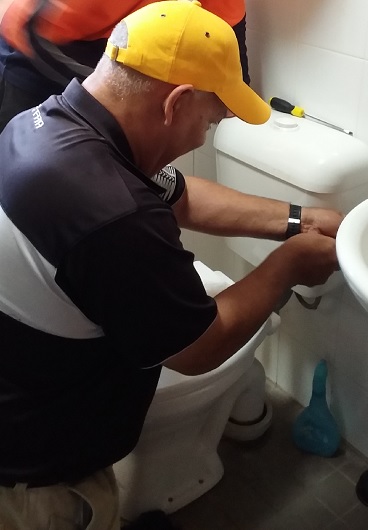 Community team member making minor repairs
Community team member making minor repairs
The Housing for Health program has a limited budget per project, so all works are prioritised to maximise safety and health benefits to the residents based on the critical
healthy living practices. Using these priorities
Healthabitat developed 11 key indicators to measure improvements in the houses that support people's ability to be safe and practice healthy living.
The 11 key indicators are:
- power, water and waste connected
- electrical safety
- gas safety
- structure and access
- fire safety
- shower working adequately
- facilities available to wash children
- laundry services
- flush toilet working
- all drains working
- facilities available to store, prepare and cook food
There are around 70 household items (taps, drains, lights etc.) that must be working properly in order to meet these 11 key critical measures. Each of these 11 priority areas are made up of a combination of several household items that need to be working properly in order to support safe and healthy living. These include safe power outlets, lighting, taps, drains, hot water temperature and stoves.
The change in these 11 indicators is measured before and after each project (survey-fix 1 and survey-fix 2) and can be used to evaluate the short and long-term effectiveness of the program.
Visit
HealthStats NSW - Healthy Living Practices in Aboriginal houses to see a summary of the results for projects by two-yearly periods.